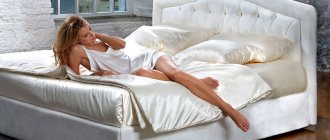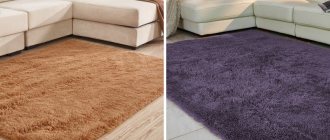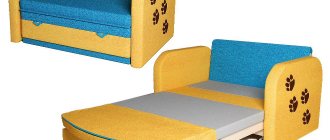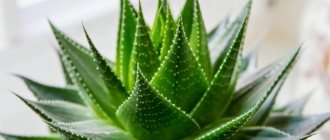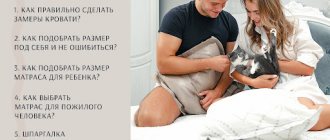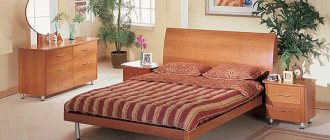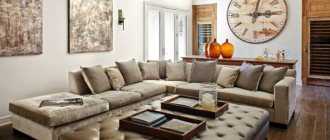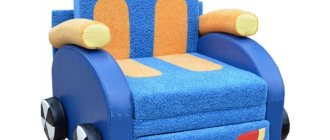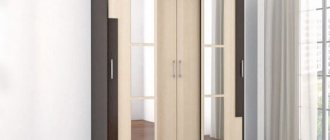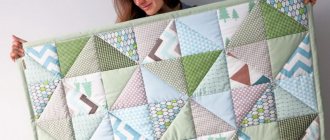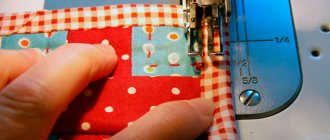Types of mattress covers
A mattress cover is a textile product with natural or synthetic filling that is placed over the mattress, protects it from various contaminants, moisture, microorganisms, or changes its properties.
This attribute allows you to extend the life of the mattress (keep it clean and intact for a long time), ensures high-quality ergonomics and hygiene of the sleeping area.
Depending on the functions performed and purpose, there are 2 main types of mattress covers for beds:
- protective;
- corrective.
In turn, they are divided into several more types and differ in the upper material and filler, each of which is suitable for performing certain tasks.
Protective mattress covers
Their main purpose is to protect the surface of the mattress from dust, stains, mechanical damage, and accidentally spilled liquids. The mattress cover is easy to remove and wash if it gets dirty - it eliminates the need to dry clean the mattress.
There are several types of protective products.
- Classic. Made of durable fabric (cotton or linen) with a thin layer of filling inside.
This is the simplest model, which looks like a sheet, which is fixed to the mattress with corner elastic bands. Provides protection from dust and premature wear (scuffs, puffs from cat claws) It has a second name - anther. A thin mattress cover is not able to protect the mattress from large amounts of spilled liquid. If washing is not done in a timely manner, dust mites and various microorganisms accumulate on the surface, and an unpleasant odor may appear. - Waterproof. Inside there is a membrane fabric that protects against liquid penetration to the base of the mattress.
This feature does not affect the comfort of sleep - the top of moisture-resistant mattress covers is made of fabric that is pleasant to the touch and highly breathable. Waterproof models are ideal for a child's mattress (or for families who sleep in the same bed with a small child), for a bed for a bedridden patient, as well as for lovers of breakfast in bed. - Antibacterial. The material and filler from which such mattress covers are made have an antibacterial effect, or they are impregnated with special agents with antimicrobial and anti-allergenic properties.
An unfavorable environment for the life and reproduction of dust mites, mold and pathogens is created inside the product. Antibacterial mattress covers are the best choice for allergy sufferers and people with low immunity.
Corrective mattress covers
The purpose of corrective bedding is to change some properties or parameters of the mattress:
- make the surface harder or softer;
- smooth out irregularities (for example, bumps or dents on an old mattress, constrictions or buttons on a sofa);
- create a thermal insulation layer.
All corrective mattress covers have protective properties - they protect the surface of the mattress from damage and various contaminants.
Depending on the purpose of use, they have different fillers inside (single-layer or multi-layer). There are 3 types of mattress covers in this group.
- Orthopedic.
Otherwise they are also called toppers. They use various fillers that harden or soften the sleeping surface. Such models can be an excellent alternative to an expensive mattress with an anatomical effect.Orthopedic mattress covers are well suited for sleeping on folding sofas, as they smooth out the textured surface well. This option is also ideal for beds with old, sagging mattresses with broken springs.
- With thermoregulating properties.
They adapt to the ambient temperature and regulate the microclimate in the bed. Special fillers warm and retain heat in winter, and cool in summer and give a feeling of coolness.Some manufacturers produce universal mattress covers for mattresses with a thermal insulation layer and a cover made of thermoregulating fabric. They are called seasonal and are suitable for both winter and summer - one side can be used at high temperatures in the house, the other at cool times.
- With a healing effect.
They are thick quilted mattress pads. As a rule, sheep or camel wool is used as filler. They soften the surface of the bed, warm and have a therapeutic effect on diseases of the joints and spine. A serious drawback of such products is the risk of allergic reactions.
Many corrective mattress covers for beds combine orthopedic and thermoregulatory properties. Manufacturers can combine several effects in one product thanks to the use of various fillers.
Purpose
The mattress pad has a second name: mattress pad. It is designed to perform various functions. One of the main ones is the protector, which protects the mattress from external negative influences. Due to the significant cost, it is not possible to change it often, and the covers are much easier to clean or replace with new ones. In bed, a mattress cover not only performs a protective function, but also provides comfort during sleep.
The mattress pad tends to follow the curves of the human body. It relaxes muscles during sleep, normalizes blood circulation and ensures healthy sleep.
Choosing a filler
The filling of a mattress pad determines its functionality, so the choice will depend on the desired effect. Both natural and artificial materials are used. Types, characteristics, properties, advantages and disadvantages of fillers are listed in the table.
| Filler name | Characteristics, properties | Advantages | Flaws |
| Natural | |||
| Camel, sheep, llama, merino wool | Soft, retains heat, removes excess moisture | Has a warming and healing effect | May cause allergic reactions |
| Felt | Soft, loose, heat-intensive | Inexpensive, does not contain chemicals | Accumulates dust, quickly deforms, absorbs moisture and odors |
| Coconut coir | Rigid, with orthopedic and thermal insulation effect | Wear-resistant, does not create an environment for the proliferation of bacteria and dust mites, does not accumulate moisture and odors | High price |
| Latex | Soft, elastic, waterproof, smoothes the surface well | Hygienic, anatomical, durable | May cause allergies sometimes, dear |
| Cactus fiber (sisal) | Elastic, well breathable, has medium hardness | Environmentally friendly, hypoallergenic, wear-resistant, with antistatic effect | High price |
| Goose down | Very soft (creates the effect of a feather bed), warms in winter, removes moisture from the body | Easily adapts to body shape, gives an extraordinary feeling of comfort | Expensive |
| Bamboo | Medium hardness, good air permeability, regulates microclimate, hygroscopic | Eco-friendly, antibacterial, neutralizes unpleasant odors, has a healing effect | — |
| Artificial (synthetic fibers) | |||
| Sintepon | Soft, lightweight, has thermal insulation properties | Inexpensive, hypoallergenic | Quickly deforms, short-lived |
| Holofiber or with (comforel, synthetic fluff, thinsulate) | Soft, lightweight, with good thermal insulation properties | Wear-resistant, deformation-resistant, inexpensive, non-allergenic | Low hygroscopicity (ability to absorb moisture) |
| Struttofiber (polyester with the addition of algae, wool, coconut coir) | Medium-hard, elastic, dense, well breathable, does not absorb moisture | Hygienic, wear-resistant, does not create conditions for the proliferation of dust mites and microorganisms | Cannot be folded or rolled up, not suitable for heavy people |
| Memorix (memory foam, ecofoam) | Highly elastic, adapts to the shape of the body, with memory effect, creates a comfortable microclimate | Evenly distributes the load over the entire surface, has a healing effect for diseases of blood vessels and joints | Relatively expensive |
| Polyurethane foam (PPU, foam rubber) | Elastic, elastic, medium-hard, moisture resistant | Does not accumulate dust and saprophytes inside, inexpensive, does not cause allergies | May release harmful chemicals and have a distinctive odor |
| Siliconized fiber (PE) | Soft, light, elastic, retains heat well and allows air to pass through | Inexpensive, hypoallergenic, adapts to body anatomy, dries quickly | Does not absorb moisture (sweat) well; after a few years it may form clumps |
To soften the sleeping area, latex or down is usually used as a filler in a mattress cover, polyurethane foam is used for compaction, and coconut or cactus coir is used to increase rigidity and create an orthopedic effect. Inexpensive materials (felt, padding polyester, holofiber) are used in classic protective models. One mattress cover can contain several types of filler at once.
Hardness degree
According to the degree of hardness, mattress covers are divided into:
- soft. Made from latex and various synthetic materials. They do not absorb dust, prevent the spread of pathogens, are resistant to deformation and have a long service life;
- average. Here preference should be given to products made from struttofiber or memorix. Such toppers will delight you with high orthopedic qualities. They are practical, durable and ensure correct body position while sleeping;
- hard. Products with coconut coir would be an excellent choice. This material is durable, hypoallergenic, moisture-resistant, antibacterial. Coconut coir perfectly allows air to pass through, creating a favorable microclimate for the sleeping area.
What material to choose a case from?
Mattress covers consist of one or more layers. Classic protective models are usually single-layer (quilted) and do not have a cover. They can be sewn from dense thick materials:
- natural
(cotton, bamboo, linen, satin), which absorb moisture well, are pleasant to the touch, but are short-lived; - synthetic
(polyester and polyester), have increased wear resistance, but do not allow air and water to pass through as well as natural ones; - mixed (jacquard, polycotton, microfiber), combine the advantages of natural and artificial fabrics.
Mixed fabrics are wear-resistant, hypoallergenic, do not stretch and are easy to care for. A mattress cover with a jacquard or polycotton cover will last for decades.
Waterproof mattress covers are usually two-layer: the top layer is made of hygroscopic cotton (terry) fabric, the bottom layer is made of membrane material.
Toppers are most often three-layered - several fillers are enclosed in a cover. For the manufacture of the top, bamboo, polycotton, jacquard or temperature-regulating fabrics are most often used:
- Coolmax;
- Outlast;
- Viscotermo;
- Lenpur.
These are modern materials for mattress covers, made from natural and synthetic fibers, have high capillary properties and increased air conductivity. Allows you to effectively remove moisture from the body and mattress filling. Soft and pleasant to the touch fabric creates additional tactile comfort and a feeling of warmth.
Choosing the mattress pad size
The size of the mattress cover must be selected according to the size of the mattress (indicated on the tag) or sleeping place - they should be as close as possible.
Manufacturers most often offer standard sizes suitable for beds:
- single – 80x190 cm or 90x200 cm;
- one-and-a-half-sleeping – 120x190 cm or 130x200 cm;
- double – 160x190 cm or 180x200 cm;
- children's – 120x160 cm;
- teenage – 90x190 cm, 90x200 cm.
It is best to measure the width and length of the mattress with a tape measure or measuring tape before purchasing a mattress cover and show these dimensions to the store consultant. He will select a model that matches the measurements. The height of the mattress, as well as the method of fastening, should also be taken into account. If you use a mattress pad with sides, then it should be 2-3 cm larger than the mattress.
You should choose the size of orthopedic mattress covers with special attention. Inconsistency with the parameters of the mattress can cause discomfort during sleep. For protective and waterproof models with elastic, a difference of 5-7 cm is acceptable.
For orthopedic purposes
Manufacturers make such products from polyurethane, fiber with the addition of hard coconut material. When purchasing an orthopedic mattress pad, it is important to pay attention to the rigidity of the product. The hardest is coconut.
Note!
Pillow for pregnant women - TOP 160 photos + video reviews of pillow designs for pregnant women. Properties and purpose of the pillow. Types of fillers and coversSofa decks: TOP-130 photos and videos of sofa deck design options for a sofa and armchair. Features of application, choice of color and material of manufacture
Envelope blanket - TOP 150 photos + video reviews of baby envelope blanket designs. Types of safe fabric materials, colors and prints of blankets
Mount selection
To ensure that the mattress cover does not get knocked down during sleep and is securely held on the mattress, it has fastenings. They come in 2 types:
- corner - elastic bands or straps sewn to two or four corners;
- contour – tightly grip the mattress around the entire perimeter.
Corner mounts are easy to use and versatile. To secure the mattress protector, you just need to hook the straps to the corners of the mattress. The disadvantage of this fastening method is the gradual stretching of the elastic bands during operation and deterioration of the fixing properties.
In models that also cover the sides of the mattress, side elastic bands running along the perimeter are used as fastening. Such mattress covers protect the end parts of the mattress and are firmly held on it.
The most reliable mounting option is a cover that covers the surface of the mattress on all sides. Can be with zippers, buttons or snaps. They prevent the product from sliding off the sleeping area, but take time when removing and putting the mattress cover on the mattress. Here it is very important not to make a mistake with the sizes.
Corrective
This type of mattress cover adjusts the performance characteristics of the mattress, in particular:
- smoothes its surface;
- smoothes out deformed areas (pressed areas, protruding springs);
- can soften a surface that is too hard or, conversely, make a too soft bed harder;
- regulates temperature. A mattress pad, of course, cannot influence the temperature of the mattress, but it can influence our sensations. Depending on your needs, a mattress cover can provide warmth or, conversely, provide coolness.
Which mattress pad to choose for a child
The child spends most of his time in his crib, so it is important to take care of the comfort of the sleeping place. With a good mattress cover for a child's bed, you can rest assured about the baby's sleep, the freshness and cleanliness of the mattress.
The surface on which a baby under three years of age sleeps must be hard, so the following is usually used as filler:
- sisal;
- coconut coir;
- polyurethane;
- struttofiber;
- bamboo.
From 3 to 12 years of age, children need a sleeping surface with a moderate degree of rigidity to maintain the spine in an anatomically correct position during the period when the skeleton is forming.
The material of the children's mattress cover must meet the following requirements:
- do not injure the baby’s delicate skin;
- good air flow;
- have hypoallergenic properties;
- do not slide or rustle.
Cotton and bamboo or thermo-regulating fabrics are best suited, as they will give the child comfort, restful sleep and will not cause irritation to delicate skin. They will hold the sheet on the mattress, preventing it from bunching up. Even if the child tosses and turns all night, the bed linen will not get tangled.
For newborns and children under one year old, it is best to choose waterproof mattress covers. They quickly absorb and reliably retain liquid, so that both the baby and the mattress remain dry. Waterproof covers eliminate the need for oilcloths in cribs, do not create the greenhouse effect inherent in non-woven materials, and do not cause diaper rash.
Children's beds come in different configurations; accordingly, mattresses of different shapes are suitable for them. They can be:
- standard (rectangular);
- round;
- oval.
When choosing a mattress cover, you should take this feature into account and select it exactly according to the size of the crib. If the cover is smaller, the mattress in it will be deformed. Too large will bunch up, which will cause discomfort to the child during sleep.
Standard sizes of children's mattress covers: 60×120 cm, 70×120, 50×90. The parameters of round products are 75x75 cm, oval - 75x125 cm.
For baby cribs, you should choose covers with an elastic band around the perimeter. This fixation is reliable even with increased activity of the child, and the product can be easily removed to wash or replace.
Pediatricians advise purchasing two mattress covers for a child under one year of age - a replacement set of bedding during this period will not hurt.
Synthetic
These are artificial materials that were created as a result of the application of advanced scientific thought. For example, holofiber has hygroscopic properties and is safe for health, including children.
This mattress cover does not lose its shape and does not cause the development of harmful microorganisms, bacteria, or fungi.
Which company is better to choose?
Mattress covers should be purchased from companies that comply with production standards and offer customers high quality products. According to consumer reviews, the products of the manufacturers listed below have the best characteristics and best match the price/quality ratio.
- Askona.
Leader in the manufacture of mattresses and bedding. The Swedish brand's products have earned the trust of millions of consumers with high quality products and a long warranty period. - Comfort Line.
Specialists of the Russian company are constantly developing new technologies in the production of mattresses and bedding for healthy sleep. Particular attention is paid to orthopedic products made from synthetic and natural materials. - Ormatek.
A Russian company producing beds and products for comfortable sleep, operating in this industry for more than 15 years. Since 2015, it has been the official partner and distributor of the American mattress manufacturer Tempur Sealy International Inc. Offers a huge selection of protective and orthopedic mattress covers at an affordable price. - Dreamline.
Russian manufacturer of bedding, working with materials from well-known European suppliers. The company has been operating since 2007 and during this time has gained popularity as a trusted and honest manufacturer of high-quality products. - Vegas.
The Belarusian brand offers high-quality mattress covers made from environmentally friendly materials in a large assortment at a relatively low price.
These are proven manufacturers with extensive experience in the industry, but there are companies that have recently entered the bedding market. They offer equally high-quality products, but their prices will be slightly lower than those of popular brands. It’s worth taking a closer look at mattress covers, Rollmatratze.
Comparison table of the presented models
Based on the rating compiled above, we have organized a table with the main characteristics of all the listed mattress covers.
| Full model name | Thickness(cm) | Hardness degree | Fixation method | Cost, rub) |
| ASKONA NIKA | 2 | high | rubber bands | 2 000 – 3 500 |
| Dreamline Memorix 4 cm | 4 | average | rubber bands | 4 000 – 5 200 |
| Ormatek Dry Plush | 0.5 | moderate | lightning | 2 000 – 3 800 |
| Comfort Line Eco Dream 5 | 5 | moderate | lightning | 2 000 – 4 000 |
| TOP Askona 2 | 4 | high | rubber bands | 10 000 – 16 000 |
| Vegas Coconut Mix | 3 | high | rubber bands | 14 000 – 16 000 |
| Dreamline Light with elastic bands | 8 | average | lightning | 1 000 – 1 300 |
Tips for choosing a mattress pad
To choose a mattress topper that best suits your purposes, it is important to consider several nuances.
- If you want to extend the life of a mattress with orthopedic properties, it is enough to buy a thin protective cover - a boot. Antimicrobial impregnations, woolen, waterproof or demi-season filling - according to wishes and needs.
- For dented sleeping surfaces, folding sofas, children's and teenagers' beds, a hard mattress cover with an orthopedic effect is needed.
- Allergy sufferers should choose a cover filled with coconut, sisal, or synthetic fibers. It is better to avoid wool, down, felt and latex.
- If you need to soften a too hard surface, you can purchase a mattress cover made of down or latex.
- It is important not to make a mistake with the sizes. A small cover will not provide full protection for the mattress and may deform it. A large one will get confused and cause discomfort to the sleeper. For a non-standard size mattress, it is better to order an individual mattress cover.
- Before purchasing, you need to check the quality of the product: the evenness of the stitches, the strength of the seams, the presence of protruding threads, and leaking filler.
- Purchasing from a trusted seller is the key to the quality and durability of the product.
Don't hesitate to ask the store for quality certificates. A correct assessment of all the parameters of a particular model will help you make the right decision when choosing a mattress cover.
Where can I buy
Having decided to buy a reliable and durable mattress cover for your bed, you should give preference to a trusted online store with numerous reviews from regular customers. For example: Ascona, Ikea, Hoff, etc. It is definitely worth checking whether it is possible to return the product in the store if the product does not meet the parameters. Don’t forget about retail, where the product can be examined in more detail.
When buying a mattress topper for your bed, you should carefully study all their technical characteristics, prices on various sites, opinions and customer reviews. After all, with the right products, the quality of your sleep will improve significantly. An incorrectly selected bed cover will cause a lot of inconvenience and will cause discomfort when resting.
How to care for a mattress cover
A good mattress cover from a well-known manufacturer (especially a topper) is an expensive thing. Proper care will help extend its service life and prevent loss of protective, hygienic and corrective properties.
The main advantage of mattress covers is ease of care. They are easily removed from the mattress, which allows you to wash or air them frequently. This eliminates the appearance of mold, mildew and the proliferation of microorganisms inside.
Mattress covers should be washed at least 2-3 times a year or when dirty. If the sheet is not used during sleep, then 1-3 times a month.
Thin mattress covers are easiest to machine wash. But in order not to spoil them, you must adhere to the basic rules.
- Before washing, you must carefully study the product label (or a special booklet with care tips) and follow the manufacturer’s recommendations. Typically, mattress covers are washed at a temperature not exceeding 400C. Hot water can destroy the structure of the filler and cause the fabric to shrink.
- Choose a delicate washing mode: with an increased water level and gentle spin (no more than 600 rpm). This will protect the product from deformation and lumping of the filler.
- Make sure that the detergent does not contain substances that can spoil the outer material or filling (do not use aggressive and bleaching washing powders, rinsing agents and conditioners).
- Use liquid detergents: gel concentrate or capsules for washing clothes. The powder is difficult to rinse out and may leave white streaks.
- Particularly dirty areas of the product must be pre-treated with laundry soap or stain remover.
If the mattress pad is large and does not fit into the machine drum, you can wash it by hand. Soaking it for longer than 20-30 minutes is not recommended. After washing, do not wring or twist it too much. Dry flat, away from heat sources.
Not every type of mattress cover can be washed. It is better to dry-clean toppers - specialists will take into account the characteristics of the material and clean it without harming the appearance or loss of properties.
Mattress covers with antibacterial impregnation are designed for 100 wash cycles, so they can be washed as often as classic models.
A mattress cover is a convenient and practical sleeping accessory that is necessary in every home. It will help extend the life of the mattress and increase the comfort of the sleeping place. It is impossible to say unequivocally which mattress cover is better - you need to choose the option that suits your needs and goals. Sleep should be a pleasure, so it is important to make yourself a comfortable bed in which you can fully rest.
Care
For long-term use, you should know how to care for your mattress cover. Such points are described by manufacturers who know better how to handle the materials used in the manufacture of the product. General care requirements are as follows:
- It is not recommended to store or use fabric products near open fire. Flammable devices should be kept at a respectful distance.
- Latex and coconut, which are often used in orthopedic structures, should be dry cleaned, as wet washing is prohibited.
- Chemicals should not come into contact with the surface of the fabric.
- The upper and lower parts of the coating change sides every few months, regardless of the frequency and intensity of use of the surface. Uniform wear will increase the service life.
- It is not recommended to roll structures in which one of the layers consists of coconut fiber.
- Whatever mattress cover you choose, it is better not to iron the product.
- Drying of structures containing wool is carried out in a horizontal position. The process is carried out in natural conditions - in the fresh air.
- Regardless of whether the cover or mattress pad is chosen, it is better that the washing temperature is no more than 40°C. Washing waterproof products involves the use of special (gentle) compounds. Requirements for dry washing are indicated by the manufacturer on the label.
- Periodic ventilation is mandatory.
How to wash a mattress cover
Before washing a mattress cover in a machine, it is better to pre-soak it, which will remove stubborn dirt. The origin of the spots plays an important role. Blood and some juices leave behind red spots. Urine, tea, coffee and juices leave yellow stains. Bright stains remain after cosmetics, felt-tip pens, and paint. In each case the steps will be different.
Red wine
Baking soda or salt, after exposure for half an hour, can remove red wine stains. Table vinegar will come to the rescue when detecting stains from juices, coffee and tea.
Sticky spots
To remove sticky marks, use ice, which is placed in a plastic bag and applied to the problem area. After freezing, removing contamination will not be difficult.
Blood
To achieve the expected result, you should wash the blood until it dries. You will need a container of cold water and laundry soap. Provided that the stains have had time to dry, the following manipulations are carried out:
- Water the stain with peroxide and immediately remove the resulting foam until the stain completely disappears.
- Dissolve 3 tbsp in a glass of water. soda or salt and wet the problem area. After half an hour, wipe with a damp sponge.
- Rub laundry soap into a glass half filled with water. The mass is applied to the contamination. After half an hour, the residues are removed with a damp cloth.
Wax
The top layer of the stain is removed with the blunt side of a knife. The remains are ironed through a thick cloth, which will allow the remaining wax to be absorbed into the fabric.
Fat
Talc will help solve the problem associated with greasy stains on mattress covers. The substance is applied to the problem area for half an hour, after which it is wiped off with light movements using a cotton swab slightly moistened with alcohol or nail polish remover. Dishwashing liquid can be used as a replacement.
Urine
Running water will help get rid of urine stains, but old stains can be removed in this way:
- A soap solution is applied to the surface of the product and wiped with a clean cloth.
- Squeezed lemon juice is diluted with salt. The solution is applied to the stain and removed with a sponge after a few hours.
- It is possible to use table vinegar, which is then removed with a rag.
- Children's laundry detergent or laundry soap will come to the rescue.
Leftover cosmetics
Felt pens, paint and cosmetics are removed from the surface of bed linen using alcohol or acetone. To do this, the substance is applied to a cotton pad and then pressed against the fabric as many times as needed to remove stains. To do this, the area is rubbed heavily.
Other contaminants
If it is not possible to determine the exact cause of contamination on the mattress cover, it is better to choose general-purpose solvents or a steam cleaner. Lemon juice, seasoned with soda or salt, also belongs to the category of universal fabric cleaners that can remove almost any stain.
Before starting the upcoming manipulations, it would be a good idea to test the detergent on an inconspicuous area. If the material is damaged, the substance should not be used, and the stain will remain invisible to prying eyes.
After removing the stains, carry out the usual washing in automatic mode. For each type of fabric, specialized detergent compositions should be used.
Waterproof products
Products that consist of a membrane belong to the category of practical mattress covers that do not allow liquid to seep through the protective layer and get inside the mattress. It should be noted that the materials have a high impermeability index, which ensures a comfortable sleep. After severe contamination, the pores of the fabric become clogged, which leads to the need for regular washing. Before choosing a mattress cover of a certain size, you should make sure that the product can be washed with detergents. Otherwise, you will need to regularly resort to dry cleaning services. Provided that machine washing is allowed by the manufacturer, then the delicate mode is selected, and the temperature should not exceed 35-40°C. Special liquid detergents are used for membrane coatings. Spin should not be used. The structure is suspended over the bathtub until the water drains completely. To restore water-repellent properties, specialized compounds are used that are applied after each wash.
Cotton construction
Cotton material is characterized by the presence of hypoallergenic characteristics, which are important during the hot months. Due to breathability, the material gives a feeling of coolness. Please note that washing at high temperatures can deform the product. For washing cotton, modes are used in which the water temperature does not exceed 40°C. Drying in the open air will help disinfect the structure. The material should not be ironed. The type of detergent will directly depend on the filler used.
Wool based layer
For cold nights, a design containing camel or sheep wool is ideal. For washing, use the “delicate” or “wool” mode, in which the water temperature does not exceed 30°C. The detergent must contain lanolin. Spinning should be avoided, as a sudden outflow of moisture will lead to deformation of the cover. Drying is carried out on a flat surface, in a well-ventilated area. The surface should not be ironed. Slow drying will make the wool musty, which is also something to consider.
Down filling
After loading the product into the drum of the machine, you should make sure that there is enough free space inside. Otherwise, the machine will not wash properly. The water temperature will be 30°C, and the mode will be gentle. Additional rinsing will be required. Bleach and concentrated detergents are not used. Liquid formulations are used as powder. Drying is carried out in a straightened form, and after complete drying the cover is fluffed.
Synthetic filler
Polyester fibers and holofiber are perfectly washable in automatic mode. The material tolerates high temperatures and aggressive detergents well. Spins are not dangerous for the material. Before washing, to determine the mode, you should understand what material the cover is made of. The mattress cover should be stitched, otherwise the filling may get lost.
Coconut filler
Fillers of natural origin cannot be washed automatically, since moisture that gets inside the structure irreversibly damages the material. The outer cover, provided it is removable, can be washed. The remaining layers should be dry cleaned.
